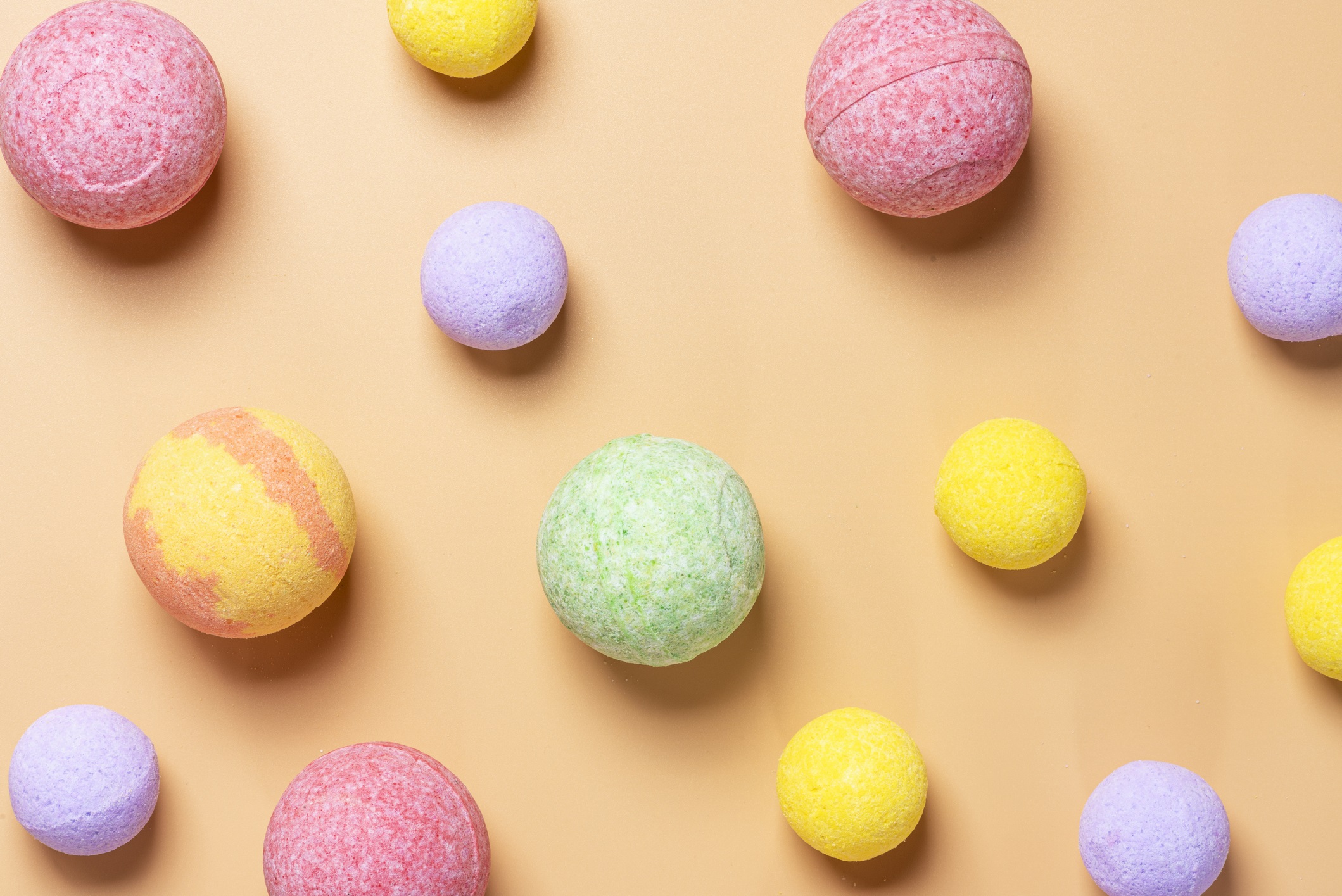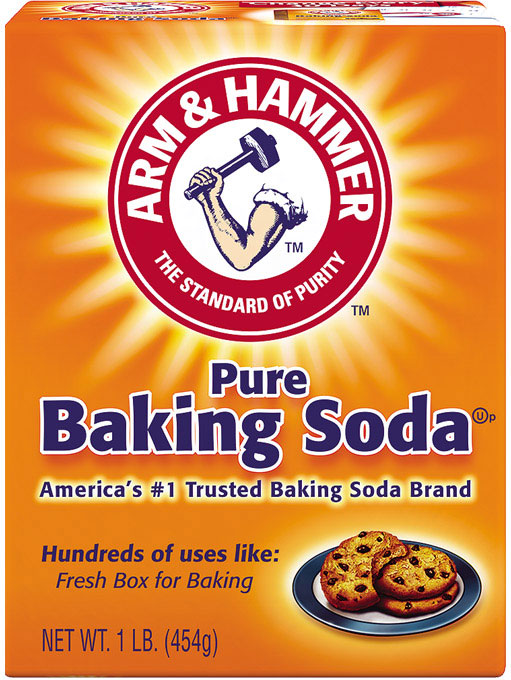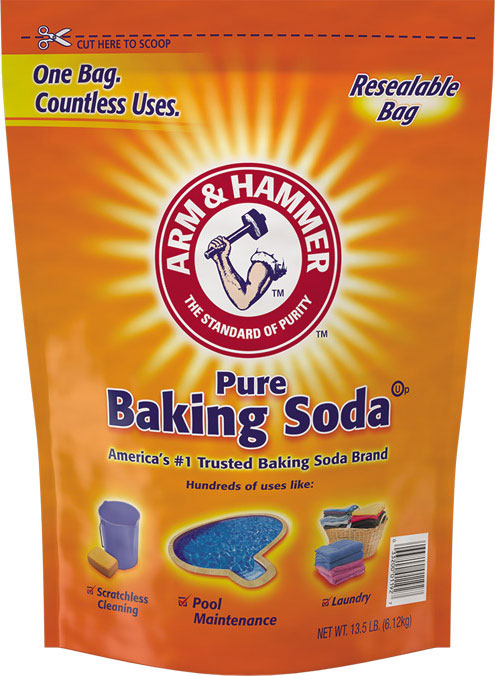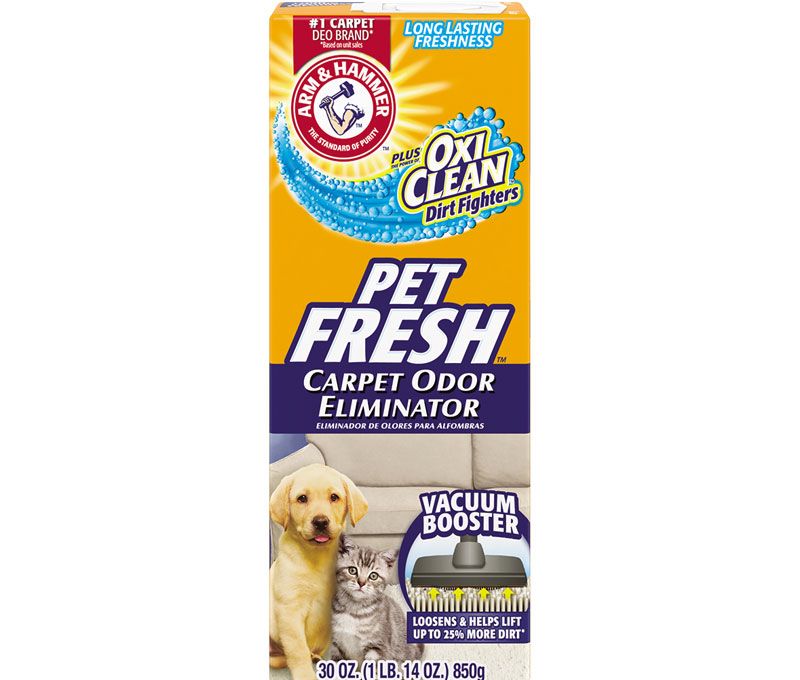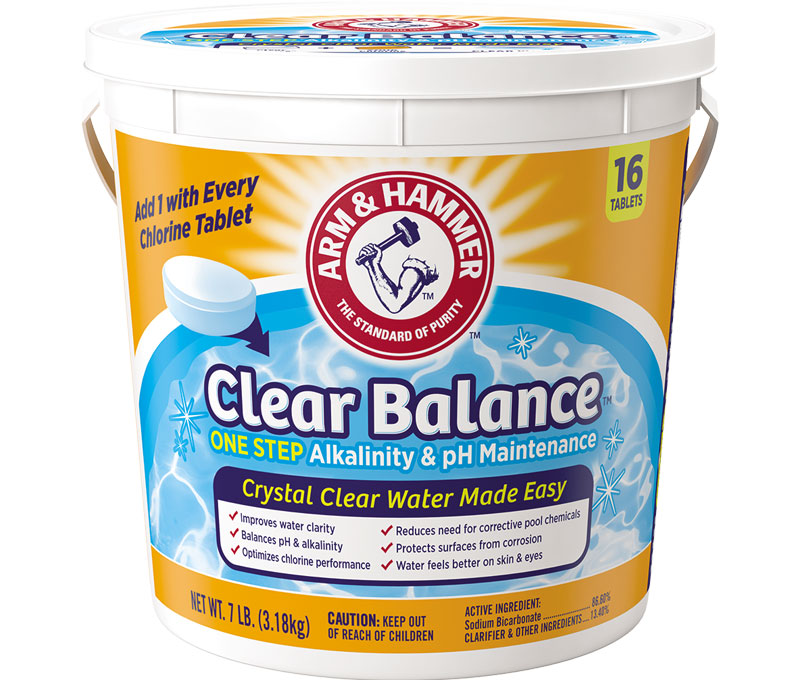Why is Baking Soda Used in Bath Bombs?
The main ingredient that powers a fizzy bath bomb is sodium bicarbonate, also known as baking soda. If you've ever seen an experiment where baking soda combines with vinegar to make a foamy reaction, that same principle is at work behind a bath fizzy. Bath bombs work by combining the higher pH alkali (baking soda) with a low pH dry acid (such as citric acid). When those two ingredients come in contact with water, they produce carbon dioxide, which you see in the form of air bubbles or fizz.
Beyond baking soda and a dry acid, bath bombs typically contain a modulator, such as corn starch. The modulator prevents the two active ingredients from fizzing before the bath bomb is put in the tub and slows down the fizzing reaction so it lasts several minutes once it's in the water. Bath bombs also tend to include food coloring and a binding agent that keeps the ingredients packed together in the molded shape. Often this is some type of oil, or other ingredient like witch hazel, isopropyl alcohol, or water.
Many DIY bath bomb recipes also include essential oils and salts for added aromatherapy or to help sooth sore muscles or moisturize skin. Additionally, some recipes can include surprises inside the bath bomb like flower petals, biodegradable glitter, or toys that are just for fun and do not affect how a bath fizzy works.
How Do You Make a Bath Bomb With Baking Soda?
Here is one of our favorite baking soda bath bomb recipes, which makes 2-5 bath bombs, depending on the size mold you use.
Ingredients:
- 4 tsp corn starch
- 8 tsp unsweetened powdered lemonade mix
- 1/3 cup ARM & HAMMER™ Baking Soda
- 1/3 cup mineral oil or baby oil
- Few drops of liquid food coloring
Instructions:
- Combine all dry ingredients in a larger bowl. Whisk them together to ensure they are evenly mixed.
- In a separate small bowl, measure the mineral oil and add a few drops of your favorite food coloring. Do not mix colors to avoid making a muddy-looking mixture. If you want to make a multi-colored bath bomb, separate your ingredients into several bowls and add a different coloring to each.
- Slowly add the liquid mixture to the powdered mixture, a little at a time.
- Use a spoon or your fingers to combine ingredients until you have a texture that is similar to damp sand.
- Quickly get your preferred bath fizzy mold or a cupcake tin and very tightly pack the damp ingredients into the mold. If you do not have a mold, put on some kitchen or medical gloves so the ingredients don't stick to your hands and shape the bath salts into balls, as if you were rolling meatballs. You want to do this right away, so the ingredients don't begin to dry out before they are shaped.
- Lay your rolled bath bombs on a sheet of wax paper. Do not use aluminum foil as the metal will react with the ingredients. Leave molded bath bombs in their molds until dry.
- Let your bath bombs dry for a minimum of 24 hours. Drying for 48 hours is recommended for best results. Bath bombs must be completely dry before use or they won't fizz and spread through the water.
- Turn your mold upside down and tap lightly if necessary to release the dry bath fizzy into your hand.
- Store your dry bath bombs out of reach of children and pets and wrapped in cellophane to prevent moisture. Do not store in a metal container.
All About That Base … and That Acid
How much baking soda you put in bath bombs depends on how large of a batch you are making, but the general rule is a 2-to-1 ratio of baking soda to powdered citric acid. Sometimes the word “acid” gives people pause but the ingredient is called an “acid” because of the compound's low pH, not because it will eat through metal. The citric acid and baking soda in bath bombs neutralize each other and create the fun fizzing action. Food grade citric acid is commonly available online if you can't find it in your local store (it's often with the canning supplies). However, there are recipes for bath bombs that don't require it, such as the one we listed above.
Homemade Foaming Bath Bomb
This basic bath bomb recipe adds Epsom salts to help sooth sore feet or muscles. You can modify this recipe by adding a foaming agent if you want your bath bomb to make lasting bubbles as well as fizz.
- 1 cup baking soda
- 1/2 cup powdered citric acid
- 1/2 cup Epsom salt
- 1/2 cup cornstarch
- Up to 3/4 tsp. water or witch hazel (usually found in the first aid aisles)
- 2 tsp essential oil (lavender, eucalyptus, rose are all popular for the bath)
- 2 tsp oil (jojoba, sweet almond, olive, mineral or baby oil)
- A few drops of food coloring
- A mold of your choice, such as regular or mini-muffin tins, candy pans, or round plastic molds specifically for bath bombs
Follow the procedure listed above to mix ingredients and to press and dry your bath bombs.
If you're looking for a more bubbly bath experience, you can add an ingredient to your bath bomb recipe that creates foaming, instead of plain fizzing. This foaming agent is Sodium Lauryl Sulfoacetate a compound derived from coconut or palm oil and used to make soap, powdered bubble baths, and scrubs as well as bath bombs. It's harder to find in your local stores, but you can purchase it easily online.
To make a bath bomb that creates a luxurious sheet of foam on the top of the water and holds its fragrance longer, try using the recipe above and adding ¼ cup of sodium lauryl sulfoacetate to the dry ingredient mix. The rule of thumb is take the total of your other dry ingredients and multiply by 10% to get the amount of SLSA to use. In other words, you don't need a lot of SLSA to get the foaming action. It's concentrated stuff!
If using Sodium Lauryl Sulfoacetate in your bath bombs, it's probably best to wear gloves while mixing and pressing them into shape, especially if you have sensitive skin. And as with any DIY project or ingredients, be sure to read the manufacturer's caution statements on the packaging and follow those instructions.
Tips and Tricks for Making a DIY Bath Bomb
There are dozens of bath bomb recipe found online, and there's no single recipe that is best for everyone. The combination of ingredients can depend not only on your personal preference, but also on your local climate. If you live in an area with higher humidity, you may need to adjust the ratio of ingredients in a bath bomb recipe. Your bath bomb's salts can absorb moisture from the air and prematurely fizz or prevent your bomb from drying and holding its shape.
If you're having trouble getting your bath bomb to stay together, try using a spray bottle to add the liquid one spritz at a time. This keeps you from adding too much liquid too fast. You can try using witch hazel or isopropyl alcohol (rubbing alcohol) instead of plain water and see if it helps when making bath bombs in a humid environment.
If you're adding essential oils to your bath bombs, remember that a little goes a long way. You'll only need a few drops. Using too much essential oil can be overpowering, or cause the bath bombs to remain soft, instead of hardening.
If your first attempt at making a bath bomb doesn't work out so well and the bomb won't hold its shape, all is not lost. Get a plastic container or mason jar and crush the ingredients to make bath salts. Add a scoop to your next bath and ramp up the luxury experience.
Overall, there's a bit of an art to making bath bombs. Once you've done it a few times, you'll know the consistency you're looking for to create beautiful bath bombs that keep their shape and fizz delightfully when added to your tub.
DIY Baking Soda Bath Bombs Put You in Charge of the Ingredients
One of the best things about making homemade bath bombs is being able to control the ingredients.
If you have allergies to flowers, ectopic dermatitis, or sensitivity to perfume, scents, or dyes, talk with your doctor before using or making a scented or colored bath bomb. If you're not sure whether an ingredient will bother you, give your doctor a call to be sure.
The good news? Essential oils and scents don't affect the effervescent fun of a bath bomb, and you don't need to dye them either. The color makes them appealing to the eye and turns the water a pretty shade, but it has nothing to do with how a bath bomb works. When you make your own bath bombs at home, you can make them the exact size, shape, scent or color that you prefer.
Arm & Hammer Baking Soda: The Standard of Purity
If you're concerned about the ingredients in your bath bombs, always choose ARM & HAMMER™ Baking Soda.
It is known as “The Standard of Purity,” because the production process ensures that there is only one ingredient, pure baking soda, in your box. ARM & HAMMER™ Baking Soda has been made in the United States since 1846, and it is the brand you can trust for you and your family.
Bath bombs make bath-time more fun for kids and more relaxing for adults, so whip up a DIY batch to take to the tub!
